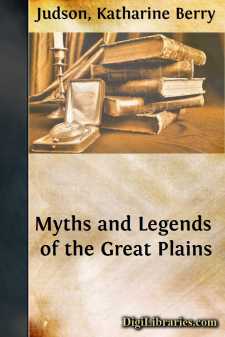Categories
- Antiques & Collectibles 13
- Architecture 36
- Art 48
- Bibles 22
- Biography & Autobiography 813
- Body, Mind & Spirit 142
- Business & Economics 28
- Children's Books 15
- Children's Fiction 12
- Computers 4
- Cooking 94
- Crafts & Hobbies 4
- Drama 346
- Education 46
- Family & Relationships 57
- Fiction 11828
- Games 19
- Gardening 17
- Health & Fitness 34
- History 1377
- House & Home 1
- Humor 147
- Juvenile Fiction 1873
- Juvenile Nonfiction 202
- Language Arts & Disciplines 88
- Law 16
- Literary Collections 686
- Literary Criticism 179
- Mathematics 13
- Medical 41
- Music 40
- Nature 179
- Non-Classifiable 1768
- Performing Arts 7
- Periodicals 1453
- Philosophy 64
- Photography 2
- Poetry 896
- Political Science 203
- Psychology 42
- Reference 154
- Religion 513
- Science 126
- Self-Help 84
- Social Science 81
- Sports & Recreation 34
- Study Aids 3
- Technology & Engineering 59
- Transportation 23
- Travel 463
- True Crime 29
Myths and Legends of the Great Plains
Categories:
Description:
Excerpt
PREFACE
From the edge of the Darkening Land, where stand the mountains which encircle the earth-plain, eastward toward the Sunland, lie the great plains of America. Smooth and flat and green they stretch away, hundreds of miles, rising from a dead level into a soft rolling of the land, then into the long green waves of the prairies where rivers flow, where the water ripples as it flows, and trees shade the banks of the gleaming water.
Here, amidst the vast sweep of the plains which stretch away to the horizon on every side, boundless, limitless, endless, lived the plains Indians. Standing in the midst of this vast green plain on a soft May morning, after the Thunder Gods have passed, when the sun is shining in the soft blue above, and the sweet, rain-swept air is blown about by the Four Winds which are always near to man, day and night,—standing far out on the plains with no hint of the white man or his work—one sees the earth somewhat as the Indian saw it and wonders not at his reverence for the Mysterious One who dwelt overhead, beyond the blue stone arch, and for the lesser powers which came to him over the four paths guarded by the Four Winds. It was Wakoda, the Mysterious One, who gave to man the sunshine, the clear rippling water, the clear sky from which all storms, all clouds are absent, the sky which is the symbol of peace. Through this sky sweeps the eagle, the “Mother” of Indian songs, bearing upon her strong wings the message of peace and calling to her nestlings as she flies. Little wonder that to some tribes song was an integral part of their lives, and that emotions too deep for words were expressed in song.
Other songs there were, with words, songs of the birds which fly through that soft, tender blue:
All around the birds in flocks are flying;Dipping, rising, circling, see them coming.
See, many birds are flocking here,
All about us now together coming.
[Pawnee]
The power to fly has always inspired Indians of all tribes and of all degrees of civilization with wonder and reverence. The bird chiefs have their own places in Indian myths. Owl is chief of the night; Woodpecker, with his ceaseless tattoo on the trees, is chief of the trees; Duck is chief of the water; but Eagle is chief of the day. It is always Eagle who is chief of the birds, even though Wren may outwit him in a tale told by the fire glimmering in the tepee, when the story tellers of the tribe tell of the happenings in the days “way beyond.” It is Eagle who inspires admiration, and becomes the most sacred bird.
Round about a tree in ever widening circles an eagle flies, alert, watching o’er his nest;Loudly whistles he, a challenge sending far, o’er the country wide it echoes, there defying foes.
[Pawnee]
In the breeze that rippled the long grass of the prairie and fluttered the flaps of the graceful tepee, waved also the corn, sent by Old-Woman-Who-Never-Dies, the ever returning life of the green thing growing. In the ravines and on the lower slopes of the grassy waves of the prairie bellowed the buffalo, or grazed in silence, having long since come up from the underground world and become the source of the Indian’s food, clothing, home, utensils, and comfort....



